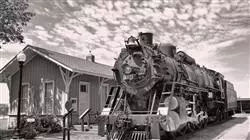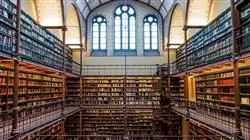University certificate
The world's largest faculty of humanities”
Description
This postgraduate diploma in Teaching the Early and Late Modern Period in High School Education will generate a sense of confidence in your work performance, which will help you grow both personally and professionally”

Aimed at Social Science teachers, the program’s design is rooted in reality, which results in a holistic and meaningful education. Special care has been taken to create motivating learning environments aimed at building a favorable attitude towards new knowledge.
The pace, difficulty and complexity of the methodologies used will progress in tandem with the postgraduate diploma, as will the assessments, which focus on evidence of learning at the end of each section and module.
Upon completing the program, teachers will have mastered a sufficiently wide range of activities, tools and contents that will enable them to guide students through the tasks they need, suggest others that can be performed by themselves, and even propose a third group of tasks of a social and collaborative nature.
One of the most relevant features of the program is enabling teachers to define their own instructional designs. They will be able to extrapolate the techniques and methodological strategies used, such as project management; preparing presentations, diagrams and mind maps; creating documents (infographics, maps, audio files, albums, boards, chronological axes, etc); creating educational blogs and wikis; cloud computing and storing of information and a long etcetera of approaches that characterize 21st century education.
Update your knowledge with this postgraduate diploma in Teaching the Early and Late Modern Period in High School Education”
The postgraduate diploma in Teaching the Early and Late Modern Period in High School Education contains the most complete and up-to-date educational program on the market. The most important features include:
- More than 75 case studies presented by experts in Teaching the Early and Late Modern Period in High School Education
- The graphic, schematic, and practical contents with which they are created provide scientific and practical information on the disciplines that are essential for professional practice
- The latest developments in evaluation, diagnosis and intervention in Teaching the Early and Late Modern Period in High School Education
- It contains practical exercises where the self-evaluation process can be carried out to improve learning
- Iconography of clinical and diagnostic imaging tests
- An algorithm-based interactive learning system for decision-making in the clinical situations presented throughout the course
- The program’s special emphasis on evidence-based education and research methodologies in Teaching the Early and Late Modern Period in High School Education
- All of this will be complemented by theoretical lessons, questions to the expert, debate forums on controversial topics, and individual reflection assignments
- Content that is accessible from any fixed or portable device with an Internet connection
This postgraduate diploma may be the best investment you can make when choosing a refresher program for two reasons: in addition to updating your knowledge of Teaching the Early and Late Modern Period in High School Education, you will obtain a qualification from TECH Global University"
The teaching staff is made up of professionals belonging to the field of Teaching the Early and Late Modern Period in High School Education, who pour into this program the experience of their work, in addition to recognized specialists belonging to prestigious leading societies.
The multimedia content developed with the latest educational technology will provide students with situated and contextual learning, i.e., a simulated environment that will provide immersive learning programmed to learn in real situations.
This program is designed around Problem-Based Learning, whereby students must try to solve the different professional practice situations that arise during the course. To that end, educators will be assisted by an innovative, interactive video system created by renowned and experienced experts in Teaching the Early and Late Modern Period in High School Education who have extensive teaching experience.
Increase your decision-making confidence by updating your knowledge with this University Expert course"

Make the most of this opportunity to learn the latest advances in Teaching the Early and Late Modern Period in High School Education and improve the attention you provide your students"
Objectives
This program in Teaching the Early and Late Modern Period in High School Education is aimed at facilitating the professional performance of educators devoted to teaching adolescents and guiding them in their professional future.

This program is designed for you to acquire updated knowledge of Teaching the Early and Late Modern Period in High School Education with the use of the latest educational technology to contribute quality and confidence to decision-making and monitoring student progress”
General Objectives
- Acquire the necessary skills to enable professional teaching practice in today's schools
- Provide the necessary training to establish inferences between theoretical knowledge and the various interactive teaching tools, which will perfect new techniques to generate knowledge
Specific Objectives
Module 1. The Teaching-Learning Process
- Discover the need to learn
- Introduce the limits of learning
- Identify behavioral theories of learning
- Understand current theories of learning
- Understand intelligence
- Identify the evolution of intelligence
- Establish the role of cognition in learning
- Understand the role of the attention in learning
- Learn the different types of memory
- Introduce the learning of dates and facts
- Learn about the features of formal education
- Identify the critical periods of learning
- Understand the role played by teachers and the classroom
- Know the risks involved in teaching
- Identify the characteristics of traditional teaching
- Understand the new challenges in education
- Discover new challenges in teaching
- Incorporate the Internet into the classroom
- Understand process assessment in the classroom
Module 2. Europe in the Modern Age
- Know the defining features of modern states
- Differentiate the variety of European political forms
- Recognize the aesthetic conceptions and essential features of Renaissance art, as well as some artists and their works
- Know the features of humanism and some authors and their works
- Geographically locate the different pre-Columbian cultures in America and define their essential features, as a reality prior to the arrival of the Spanish
- Analyze and identify the causes of the discovery of America
- Understand the processes of conquest and colonization during the Modern Age
- Explain the origin and religious and political consequences of religious fragmentation in Europe
- Identify the differences between Protestant denominations
- Understand the Catholic Reformation or Counter-Reformation
- Recognize the political, social and economic features of Spanish America
- Analyze the relations between the European kingdoms that lead to the Thirty Years' War
- Distinguish the features of absolutist and parliamentary regimes
- Recognize the essential characteristics of Baroque art and some of its authors and works, as well as its importance in Europe and America
- Understand the scope and importance of the Enlightenment as an intellectual movement in Ancient Regime’s society
- Understand enlightened absolutism and its essential features
- Identify the Bourbon reforms in America
- Observe and relate Modern Age works of art to their political, social, economic and religious context
- Know how to analyze historical texts, maps and images
Module 3. The Late Modern Period
- Explain the political, social and economic features of the Ancient Regime
- Know what advances resulted from the Scientific Revolution in the 17-18th centuries
- Explain the political, social and economic features of the Ancient Regime
- Understand the scope of the Enlightenment as a new cultural and social movement in Europe and America
- Identify the main events of the bourgeois revolutions in the United States, France, Spain and Latin America
- Understand the scope and limitations of the revolutionary processes that took place in the 18th century Identify the main events of the liberal revolutions in Europe and America Verify the scope and limitations of the revolutionary processes that took place in first half of the 19th century
- Describe the relevant events of the Industrial Revolution and their causal sequence
- Identify imperialist powers and the economic and political power distribution in the world in the last quarter of the 19th century and the beginning of the 20th
- Establish causal hierarchies (aspect, time scale) of the development of imperialism
- Know the main scientific and technological advances that took place in the 19th century as a consequence of the industrial revolutions
- Know the main events of the Great War, its interconnections with the Russian Revolution and the consequences of the Treaties of Versailles
- Know and understand the most important events, milestones and processes of the interwar period and the 1920s and 1930s, especially in Europe
- Analyze the events that led to the rise of fascism in Europe
- Know the main events that took place during the Second World War
- Understand the concept of “total war”
- Differentiate the geographic scales of the war: Europe and the world
- Understand the context in which the Holocaust unfolded and its consequences
- Organize the most important events of post-war decolonization in the 20th century
- Understand the limits of decolonization and independence in an unequal world
- Understand the economic advances of the Soviet regimes and the dangers of their internal isolation, as well as the economic advances of the Welfare State in Europe
- Understand the concept of “cold war” in the post-1945 context, and the relations between the two blocs, the USA and the USSR
- Understand the creation and development of the European Union

Seize the opportunity and take the step to get up to speed on the latest developments in Teaching the Early and Late Modern Period in High School Education”
Postgraduate Diploma in Teaching the Early and Late Modern Period in High School Education
.
Today, it is essential for secondary school teachers to be up to date on the latest pedagogical approaches and the most current historical knowledge. Would you like to get the tools you need to teach dynamic and meaningful classes? The Postgraduate Diploma in Teaching the Early and Late Modern Period in High School Education Teachers created by TECH Global University will help you fulfill that purpose. During the course, you will explore the main themes of the Modern and Contemporary Ages, from political and social changes to scientific and technological advances. You will delve into key concepts such as absolutism, the Industrial Revolution, independence movements and the two world wars. In addition, you will learn to relate these historical events to today's world, fostering critical reflection in your students.
Specialize in Teaching the Early and Late Modern Period
.
This complete TECH program is an investment in your professional future, as it will allow you to differentiate yourself and stand out in the job market. You will obtain a university certificate endorsed by a prestigious institution, which will allow you to access new job opportunities. Here, you will explore research-based teaching methods, interactive activities and group discussions to promote participatory and collaborative learning in the classroom. In addition, you will address the latest trends in the use of educational technology and online resources to enrich your lessons. You will discover how to use digital tools, mobile applications and online resources to create engaging and accessible teaching materials. By the end of the course, you will have acquired the skills necessary to teach history classes in an effective and motivating way.







